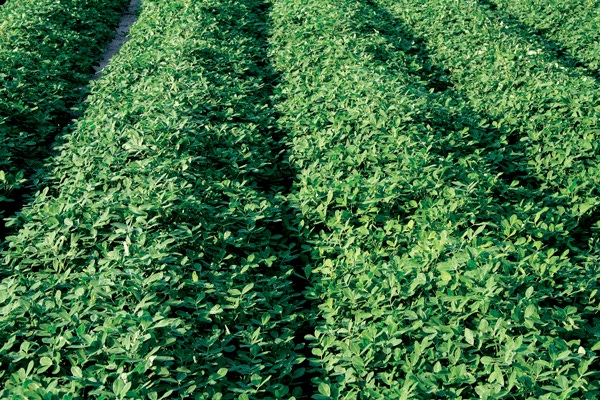May 26, 2011

Scouting for soil insects pays dividends in peanut production, as evidenced last year by a few fields that were devastated by various pests, says Ayanava Majumdar, Auburn University Extension entomologist.
“Because we don’t see them very often, we tend to forget our below-ground insect pests, but last year opened our eyes,” says Majumdar.
In Alabama’s peanut insect monitoring project for 2009-2010, more than 25,000 insects were trapped and more than 400 pounds of soil analyzed, he says.
“Insects are attracted to peanut pods because the pods give off carbon dioxide and heat,” says Ayanava.
A major insect pest of Alabama peanuts in 2010 was the lesser cornstalk borer (LCB), he says, with many outbreaks being reported throughout the Southeast.
Many plant species play host to the LCB, and they’re able to survive and escape predators in dry soils. Like other soil insects, they’re attracted to carbon dioxide and heat from the plant roots, and they make sand tubes on pods and stems.
It’s very important, says Majumdar, to detect this insect early in the season so control measures can be undertaken. However, the only product currently available that is effective is Lorsban. “Scouting maps for the lesser cornstalk borer are available through the AWIS Weather Services website, and these can be very helpful.”
One grower in southwest Alabama lost 20 to 30 percent of his peanut crop in 2010 to LCB, he says. “Last year, we collected more than 5,000 lesser cornstalk borers in the fields, and that’s more than we want to see. We maintain a pheromone trap network across the state, and I personally scouted 30 fields last year,” says Majumdar.
Burrower bug numbers are up in some years and down in others, but several outbreaks were seen in 2010 in Baldwin, Escambia and Monroe counties in southeast Alabama, he says.
Adults and nymphs have piercing-sucking mouthparts that are inserted into mature kernels during feeding. Kernels develop light yellow to dark brown lesions as a result of this feeding, a damage called “pitting.”
“For farmers who are using conservation-tillage systems, these bugs do feed off of organic matter,” he says. For management of burrower bugs, do not strip-till peanuts into corn or wheat stubble to reduce the risk of feeding injury. Also, till in the fall, before planting, and destroy volunteer plants throughout the season for lower population buildup and risk to subsequent crops, advises Majumdar.
Chemical control
For chemical control, a granular insecticide can be applied early in the season, at pegging, he says.
Southern corn rootworms were not seen much throughout Alabama in 2010, with the exception being in Lee County in east Alabama. Larvae make one or more holes on the side walls of a peanut pod in order to access the kernels. Soils with high organic matter and those that hold moisture, such as clay soils, have been associated with infestations in peanut fields, probably due to increased survival of the immature stages under those conditions.
“Another peanut insect pest, wireworms, makes large entry holes in the pods to feed on the seeds. Pod injury symptoms from wireworms can look like Southern corn rootworm injury, but wireworms are known to make larger injury holes on the pods than rootworms.”
For scouting wireworms, Majumdar suggests first studying the field history to see if there were previous infestations. Then, use germinating seed baits in the soil. “Seed baits should be used before planting peanuts, and the accuracy of seed baits improves with the number of baits. An economic threshold would be one wireworm per bait station or 30-percent pod damage.”
Minor soil insect pests of peanuts include white fringed beetles and cutworms, he says. The larvae of white fringed beetles make irregular holes in the taproot, proving fatal to peanuts. This insect pest looks like a boll weevil, he adds, but has no snout. The adult has white stripes on its side, and the larvae are plump with a reduced head.
Cutworms can be found throughout Alabama, says Majumdar, with more than 60 crops and turf playing host to the insect. They are greasy, plump caterpillars, and the larvae curl when touched.
Cutworms cut seedlings at night and may climb plants, he says. Granulate cutworms bore into the middle of the peanut pod, leaving a large hole.
Cutworms often are detected whenever a grower is scouting for other insects. The risk is higher in dry conditions and well-drained soils.
Majumdar (Dr. A) can be reached at (251) 331-8416 or [email protected].
About the Author(s)
You May Also Like




